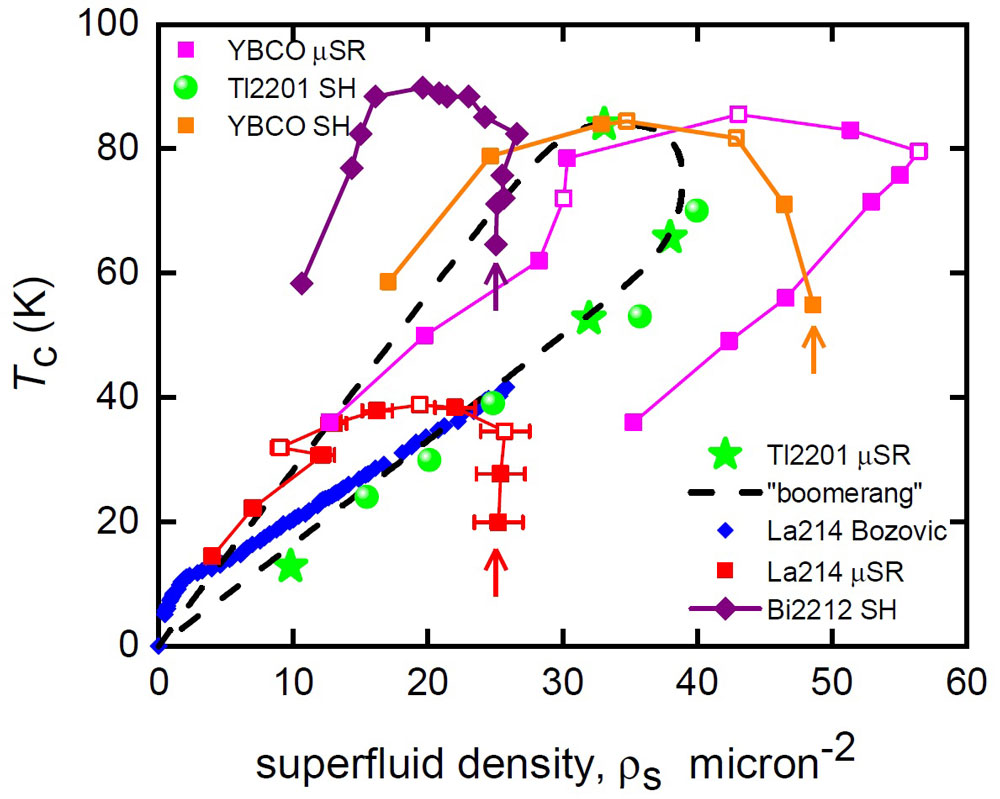PC-10-3
The curious case of overdoped cuprates: conventional or exotic?
14:00-14:15 30/11/2023
*Jeff Tallon
Robinson Research Institute, Victoria University of Wellington
Underdoped cuprates are without doubt complex and exotic. Several correlated states compete near the Fermi surface including superconductivity, charge ordering and the pseudogap 'state'. But for a long time it was thought that overdoped cuprates represented progressively more conventional behaviour - despite the fact that it has been known since quite early that there is a strong suppression of superfluid density on progressing deeper into the overdoped state. We know that underdoped cuprates also display a suppression of superfluid density due to the pseudogap so this overdoped behaviour came to be known as the 'boomerang effect'. We have found this deeply puzzling because many other overdoped superconducting properties display conventional behaviour. Amongst these are the scaled BCS ratios for the condensation energy1, the specific heat jump2 and the superconducting energy gap3. Collectively they imply that the superfluid density too should remain conventional. Techniques for measurement of superfluid density include muon spin relaxation, optics, susceptibility, mutual inductance and the tunnel diode resonator. We have been involved in a number of these earlier reports4. But here we measure the superfluid density using field-dependent specific heat measurements on bulk samples of Ca-doped YBa2Cu3Ox, La2-xSrxCuO4 and Bi2Sr2CaCu2O8+x and find no suppression of the superfluid density across the overdoped region, consistent with our earlier thermodynamic results mentioned above. Yet Tl2Ba2CuO6 proves to be an exception. Are the overdoped cuprates in this sense conventional after all? And what is the reason for these divergent results amongst so many different techniques? The cuprates continue to fascinate in their curious behaviour.
The figure shows Tc plotted as a function of superfluid density for several cuprates using specific heat (SH) or muSR. The vertical arrows highlight the constancy of the superfluid density on he overdped side for YBa2Cu3Ox, La2-xSrxCuO4 and Bi2Sr2CaCu2O8+x but not for Tl2Ba2CuO6.
1. “Coexistence of the superconducting gap and pseudogap above and below Tc in HTS cuprates”, J. L. Tallon, F. Barber, J. G. Storey and J. W. Loram, Phys. Rev. B. Rapid Comm. 87, R140508 (2013).
2. “Locating the pseudogap closing point in cuprate superconductors: absence of entrant or reentrant behaviour”, J.L. Tallon, J.G. Storey, J.R. Cooper and J.W. Loram, Phys. Rev. B 101, 174512 (2020).
3. “Fluctuations, and Tc reduction in cuprate superconductors”, J. L. Tallon, J. G. Storey and J. W. Loram, Phys. Rev. B 83, 092502 (2011).
4. "Muon spin rotation study of the correlation between Tc and ns/m* in overdoped Tl2Ba2CuO6", Ch Niedermayer, C Bernhard, U Binninger, H Gluckler, J Tallon, E J Ansaldo and J I Budnick, Physical Review Letters, 71, 1764-7 (1993).
The author acknowledges extensive discussion of this work with Prof John Cooper, Cambridge University and Dr John Loram* for the original measurements. *Deceased.
